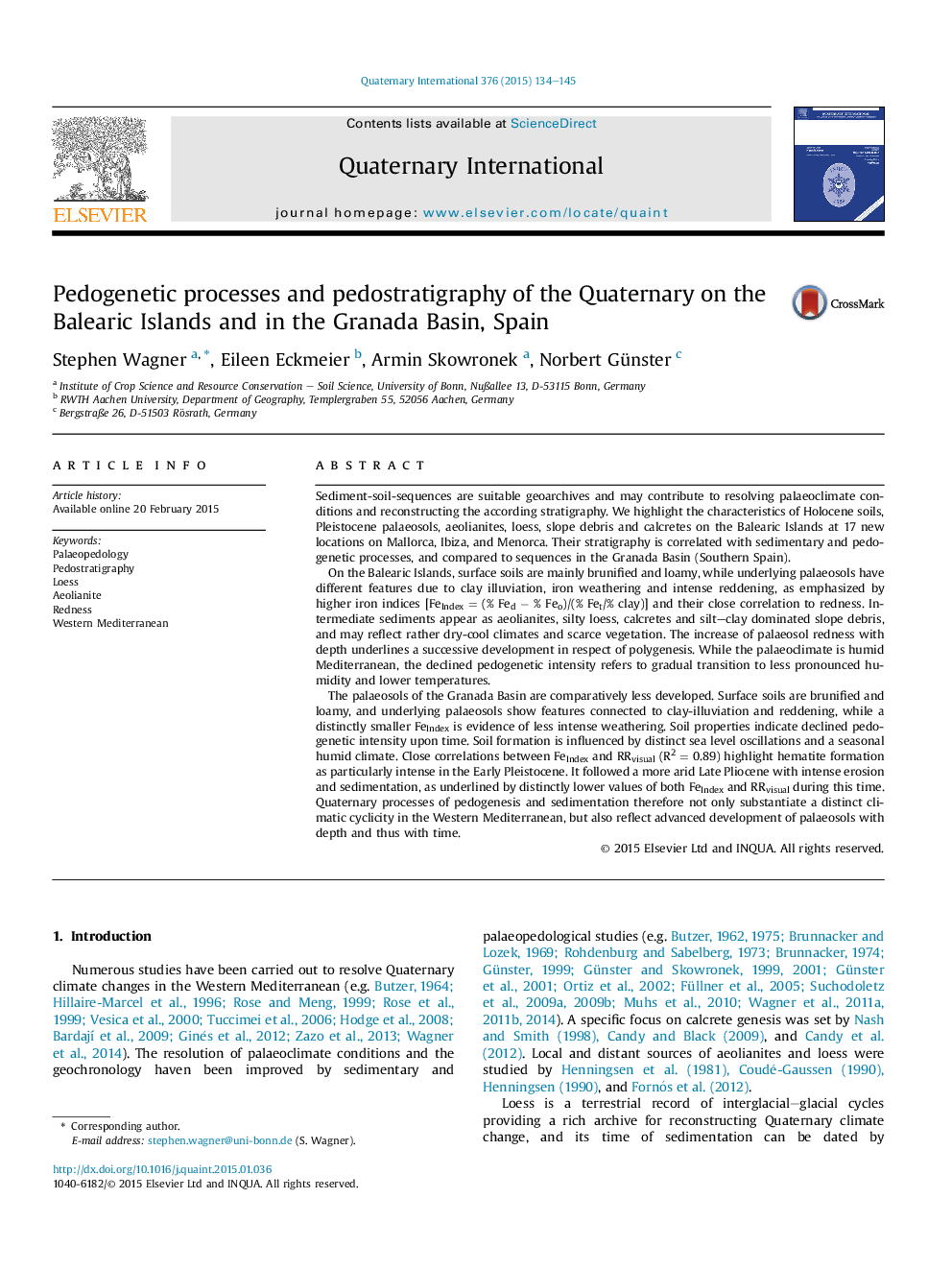| کد مقاله | کد نشریه | سال انتشار | مقاله انگلیسی | نسخه تمام متن |
|---|---|---|---|---|
| 1040672 | 1484121 | 2015 | 12 صفحه PDF | دانلود رایگان |
Sediment-soil-sequences are suitable geoarchives and may contribute to resolving palaeoclimate conditions and reconstructing the according stratigraphy. We highlight the characteristics of Holocene soils, Pleistocene palaeosols, aeolianites, loess, slope debris and calcretes on the Balearic Islands at 17 new locations on Mallorca, Ibiza, and Menorca. Their stratigraphy is correlated with sedimentary and pedogenetic processes, and compared to sequences in the Granada Basin (Southern Spain).On the Balearic Islands, surface soils are mainly brunified and loamy, while underlying palaeosols have different features due to clay illuviation, iron weathering and intense reddening, as emphasized by higher iron indices [FeIndex = (% Fed − % Feo)/(% Fet/% clay)] and their close correlation to redness. Intermediate sediments appear as aeolianites, silty loess, calcretes and silt–clay dominated slope debris, and may reflect rather dry-cool climates and scarce vegetation. The increase of palaeosol redness with depth underlines a successive development in respect of polygenesis. While the palaeoclimate is humid Mediterranean, the declined pedogenetic intensity refers to gradual transition to less pronounced humidity and lower temperatures.The palaeosols of the Granada Basin are comparatively less developed. Surface soils are brunified and loamy, and underlying palaeosols show features connected to clay-illuviation and reddening, while a distinctly smaller FeIndex is evidence of less intense weathering. Soil properties indicate declined pedogenetic intensity upon time. Soil formation is influenced by distinct sea level oscillations and a seasonal humid climate. Close correlations between FeIndex and RRvisual (R2 = 0.89) highlight hematite formation as particularly intense in the Early Pleistocene. It followed a more arid Late Pliocene with intense erosion and sedimentation, as underlined by distinctly lower values of both FeIndex and RRvisual during this time. Quaternary processes of pedogenesis and sedimentation therefore not only substantiate a distinct climatic cyclicity in the Western Mediterranean, but also reflect advanced development of palaeosols with depth and thus with time.
Journal: Quaternary International - Volume 376, 30 July 2015, Pages 134–145
